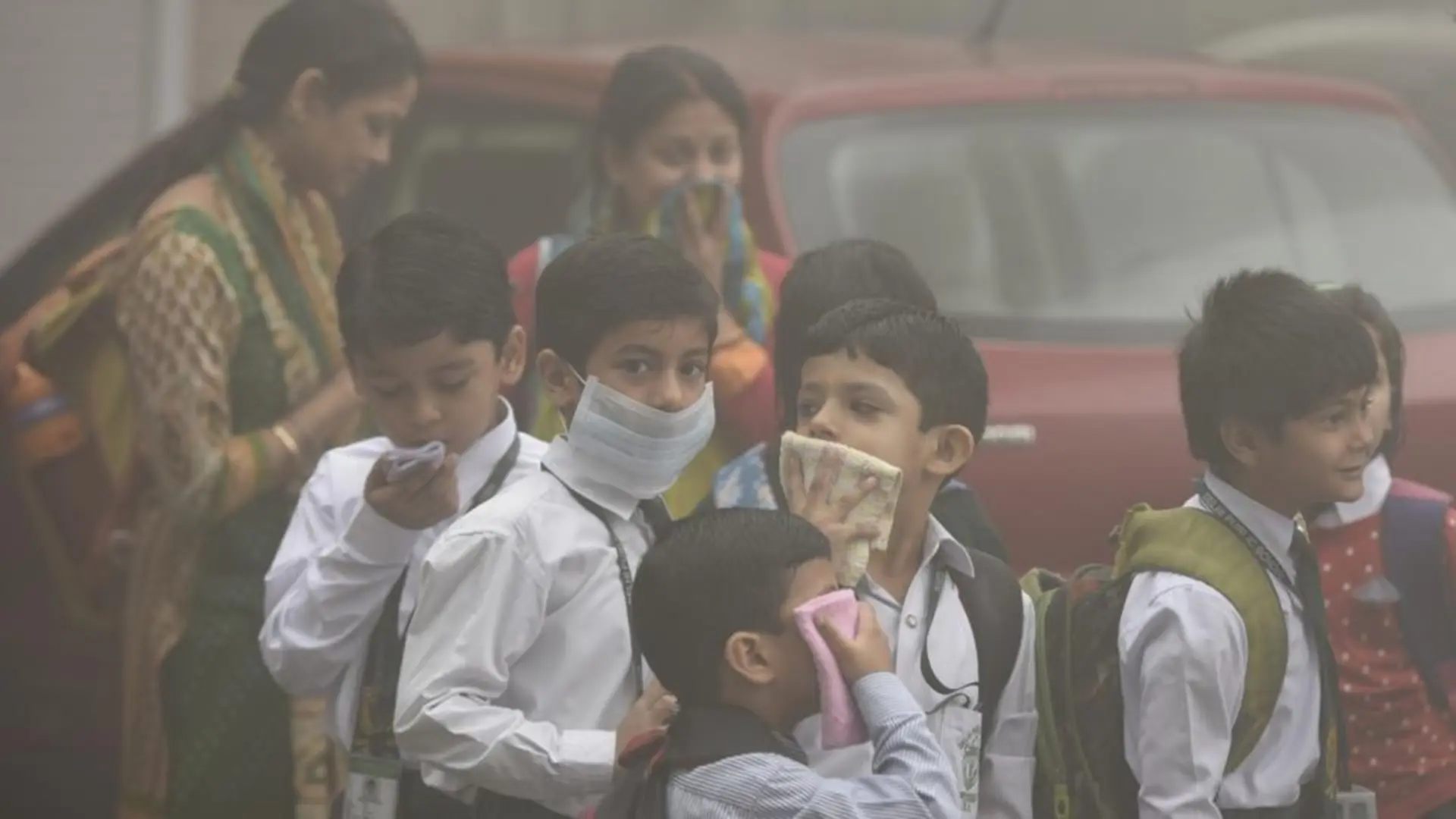Delhi’s air quality took a drastic turn for the worse on Monday morning, as several parts of the city recorded Air Quality Index (AQI) levels exceeding 1,500, signaling a hazardous pollution crisis. According to Swiss air technology company IQAir, stations in areas like Mundka, Dwarka-Sector 8, and Rohini reported AQI readings of 1591, 1497, and 1427 respectively, marking alarming levels of pollution that are affecting residents’ health and daily life.
The toxic smog, which blanketed Delhi over the weekend, has prompted local authorities to implement Stage 4 of the Graded Response Action Plan (GRAP), which is triggered when air quality deteriorates to this hazardous level. The implementation of GRAP-4 includes measures such as halting construction activities, banning the use of coal and firewood, and increasing the frequency of dust suppression in high-traffic areas. This is part of an urgent effort to manage the situation and protect public health.
According to the Sameer app, which updates the National Air Quality Index (NAQI) hourly, Delhi’s overall AQI hovered around 485 during the same period, with most areas falling between 470 and 500 — a category known as ‘severe-plus.’ These figures highlight the extreme pollution levels and the pressing need for long-term solutions to combat air quality issues.
MUST READ: Supreme Court To Hear Plea On Serious Measures To Curb Delhi Air Pollution
The air quality deterioration from Sunday night to Monday morning saw a rise in air pollution levels, with smog enveloping several parts of the city. This smog significantly reduced visibility, prompting the Delhi International Airport Limited (DIAL) to issue an advisory. While flight operations were unaffected, passengers were advised to contact their airlines for the latest updates, as the low visibility procedures were being implemented.
In response to the crisis, Delhi Chief Minister Atishi announced the discontinuation of physical classes for all students, except for those in classes 10 and 12. This precautionary measure aims to protect children from the harmful effects of prolonged exposure to hazardous air quality. It is part of the city’s broader efforts to protect vulnerable populations, including children and the elderly, who are most at risk during such pollution peaks.
Key Areas Affected
Mundka, Dwarka-Sector 8, and Rohini remain the worst-hit areas in terms of AQI levels, while large parts of the city are experiencing high levels of particulate matter in the air, making it extremely difficult to breathe. These areas are part of the broader NCR region, which is facing worsening air quality due to a combination of factors such as crop burning, vehicular emissions, and construction dust.
The severe air quality not only poses health risks but also disrupts everyday life, with many residents complaining about irritation in the eyes, throat discomfort, and respiratory problems. Long-term exposure to such hazardous air can lead to serious health issues, including chronic respiratory diseases and cardiovascular problems.
Urgent Action and Future Measures
With the implementation of GRAP-4, the city has intensified efforts to curb pollution, but the government acknowledges that more needs to be done to bring lasting change. Experts argue that long-term strategies, such as stricter emission controls, more green spaces, and better public transport infrastructure, are essential to combat Delhi’s recurring air pollution crisis. Authorities have also been working on improving public awareness about the impact of air pollution and encouraging people to take preventive measures, such as wearing masks and limiting outdoor activities.
As Delhi continues to grapple with this environmental emergency, the city’s residents are urged to stay indoors as much as possible, particularly those with pre-existing respiratory conditions. The government is also working to improve air quality monitoring systems and ensure that pollution mitigation measures are adhered to more rigorously.
The toxic smog currently enveloping Delhi serves as a stark reminder of the urgency of addressing the city’s air pollution crisis. With winter approaching and pollution levels expected to worsen, the coming weeks will test the resilience of both the authorities and the public in combating this ongoing environmental challenge.
ALSO READ: PM Modi Welcomed With Sanskrit Chants In Brazil For G20 Summit, WATCH


















